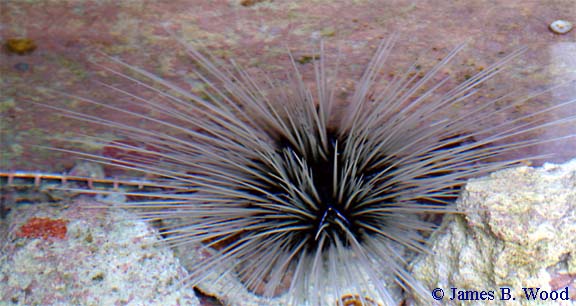Long-spined
sea
urchin (Diadema antillarum)
By K. Clay
Farland
Dr. James B. Wood - Editor
Dr. James B. Wood - Editor
|
Long-spined
sea
urchin (Diadema antillarum)
By K. Clay
Farland
Dr. James B. Wood - Editor |
